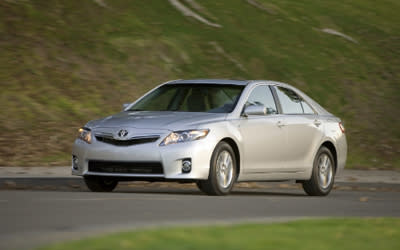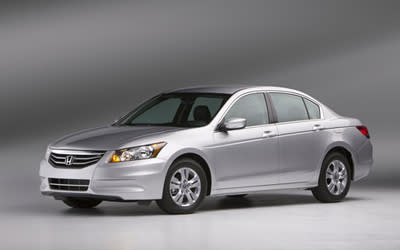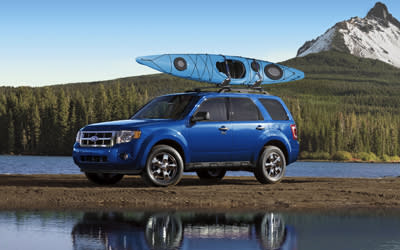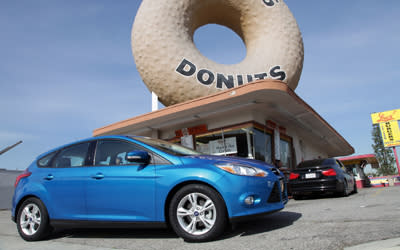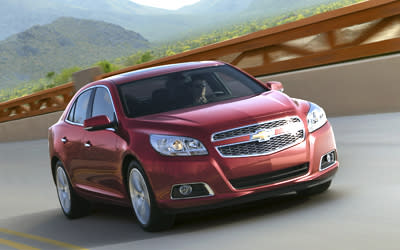Made in the USA
But does that make it American?
One of the highlights of the 2011 New York International Auto Show was the speech by the CEO of the Chrysler Group, which a year and a half earlier had been taken over by Fiat. The presentation began like an old fashioned revival meeting, with a gospel group laying down a heavy hand-clappin’ rhythm before the carmaker’s executive took the stage. He talked about the revival of an American city, its people, and the automobiles it produced. It was a stirring speech, and especially compelling because the speaker’s voice was laced with a French accent as thick as Bearnaise.
But that should have come as no surprise; for decades, industry watchers have seen the line between “American” and “foreign” become increasingly blurred to the point that in 2010, foreign automakers produced more cars in the U.S. than did the Big Three – if we can still call them that. Even so, there’s something poignant about the message “Buy American” delivered in a foreign accent.
More to the point, it begs the question: what is an American car? Detroit’s car-making troika have long skirted the issue by referring to "North American" production—which includes Canada and Mexico, where they build about one-third of their cars. The snappy new Chevy Camaro, for instance, is made in Canada, while the popular Ford Fusion sedan is assembled in Mexico.
The matter of national identity has been muddled ever since 1982 when, in Marysville, Ohio, the Honda Accord became the first Japanese-branded vehicle to be built in the United States. Some competitors and critics labeled the Japanese factory a “transplant” built to avoid import tariffs and taxes that might otherwise apply. Nonetheless the marque has expanded its operations since then to the point that 80 percent of the Hondas and Acuras sold in the USA are built right here.
But does that make them American? Not necessarily. According to the U.S. government, to be an American car, 75 percent of a car’s parts must come from the USA or Mexico or Canada. Including Canada and Mexico allows the Detroit 3 to claim they still build the majority of their cars in North America.
In the case of the Honda Accord, its 80% USA content makes it as American as prom night. More so, in fact, than the Chevrolet Cruze whose content is a mere 45% American made. Likewise the Mitsubishi Eclipse whose 80% American content eclipses – no pun intended – the Lincoln Navigator’s 50% content.
Ultimately, for all the talk and statistics about place of manufacture and borders and tax breaks, for the car buying public it all comes down to one question: what difference does it make?
For a long time a car’s country of origin made all the difference in the world. American cars weren’t just vehicles, they were baseball and hot dogs and the Beach Boys. For loyal Englishmen Rolls-Royce and Bentley were on a continuum with the Battle of Britain and stiff upper lips – they were what Britain was all about. Italians, for their part, saw Ferraris and Alfa Romeos as something transcendent: “The car, she is like a woman.” For Germans the element that elevated their auto industry beyond all others was the Autobahn, where speed limits were more a matter of horsepower and nerve than law.
How could you duplicate these ineffables in a plant thousands of miles away?
As for the Japanese, absent a motoring tradition, how could they compete? As a Munich-based BMW executive once confided to Town & Country magazine, “We drive to work at 140 miles an hour. Japanese carmakers ride the train.”
Unencumbered by myth, it stood to reason that the Japanese would be the first to begin manufacturing in the States. It was different in the more upscale markets; conventional wisdom held that luxury car buyers wouldn’t buy a car made anywhere but its homeland – its pedigree was part of the package. The paradigm shifted when, in 1994, BMW began building the 318i sedan in a plant in Spartanburg, South Carolina. This, says Kenn Sparks, BMW Business Communications Manager, was no mere transplant built as a domestic tax dodge; rather it was a “world plant” intended to build cars for a global market. Since then the Spartanburg factory has become the world’s sole source for the Z4, X5, and X6 models with the X3 soon to come. But the American-built BMW’s will meet the same standard as those built in Germany, says Sparks. “BMW has one world standard. We have lots of experience worldwide and it’s transferrable.”
Still, given that South Carolina is the Old South and Bavaria is in the Alps, surely there must be cultural differences that distinguish operations, one from the other. Like, for instance, the centuries-old custom of taking a break in the middle of the work day to knock back a flagon or two of beer.
“Not in Spartanburg they don’t!” says Sparks.
This is exactly the point, because in Bavaria, they do. Just what this minor difference in local customs means for Bimmer buyers is hard to say, but in car making as in love and war, you overlook the role of culture at your peril. You could see this in the 1983 movie “Gung Ho,” in which a Japanese car company starts building automobiles in an American plant and hilarity ensues.
Or you could ask anyone involved in the 1997 “merger of equals” between Daimler-Benz and Chrysler. On paper, it couldn’t miss. The plan called for Chrysler factories in the States to use Daimler parts, components, and even vehicle architecture to sharply reduce the cost to produce future vehicles. But problems surfaced when Daimler's Mercedes-Benz luxury division, whose components Chrysler would use, was reluctant to cooperate with their new American partner. Eventually, all Chrysler got were some steering and suspension components, a transmission, a diesel engine, and few packages. This sorry saga ended with Mercedes paying a company several billion dollars to take the American manufacturer off its hands. Today, no doubt saddened but wiser Mercedes makes SUVs and its stylish C-Class in a plant in Vance, Alabama, while Chrysler, off its bailout by U.S. taxpayers, is of course now owned by Fiat.
If, in the early 1980s, there were good reasons for foreign car makers to manufacture in American “transplant” facilities, there are even better reasons 30 years later. Wages – especially in the South, where most of the plants are located – are relatively low while manufacturing stateside brings them closer to consumers. Then, too, transportation savings become increasingly significant as gas approaches $5 per gallon. Nissan’s scheme to buy 85% of the parts for its Titan full-sized pick up truck is bound to appeal to the good ol’ boy market while showing the way for other Japanese truck makers.
Thus the incursion of foreign car makers is likely to accelerate over the next few years, with European and Asian cars becoming more American and American cars becoming more European or Asian. What awaits along this evolutionary path are bound to be improved cars and trucks, the kind the public wants and needs. It would be nice, too, if sometime in the future the most popular cars made in America’s plants could be American.
But meanwhile, according to Cars.com's “American Made Index,” they’re Japanese.
The Cars.com American-Made Index
What Are the Top American-Made Cars? | |||
|---|---|---|---|
Cars.com's American-Made Index rates vehicles built and bought in the U.S. Factors include sales, where the car's parts come from and whether the car is assembled in the U.S. We disqualify models with a domestic parts content rating below 75 percent, models built exclusively outside the U.S. or models soon to be discontinued without a U.S.-built successor. | |||
Rank | Make/Model | U.S. Assembly Location | Last Rank |
1. | Georgetown, Ky.; | 1 | |
2. | Marysville, Ohio; | — | |
3. | Kansas City, Mo. | — | |
4. | Wayne, Mich. | — | |
5. | Kansas City, Kan. | 3 | |
6. | Lincoln, Ala. | 4 | |
7. | Warren, Mich. | — | |
8. | San Antonio | 7 | |
9. | Toledo, Ohio | — | |
10. | Princeton, Ind. | 6 | |

 Yahoo Autos
Yahoo Autos 
